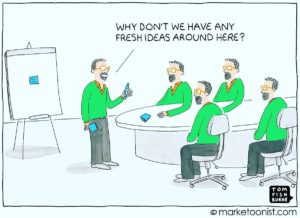The lifeblood of every organisation is its employees, and the focus on diversity and inclusion in the workplace has never been more intense than it is today. Organisations the world over are taking diversity and inclusion very seriously. Increasingly, CEOs are having to take ownership and lead the way, making HR and senior management accountable for creating equal, fair and inclusive workplaces.
More than a moral obligation
Not long ago, organisations had a ‘duty of care’ and a ‘moral obligation’ to do the right thing. But today, workplace diversity is more than this. Statistics show that it is also a commercial issue – it is a business strategy. Fostering a diverse and inclusive workplace has a direct and real effect on a company’s bottom line, with considerable financial and business benefits. Research shows, companies that embrace diversity and inclusion in all aspects of their business statistically outperform their competition.
What do ‘Diversity’ and ‘Inclusion’ mean?
The terms ‘diversity’ and ‘inclusion’ are often lumped together. Many assume they mean the same thing. However, although these terms are related and are usually used in the same context, it is important we understand the difference between them. Put simply, diversity is about differences. Inclusion is about embracing those differences. But let’s take a closer look.
What is Workplace Diversity?
Workplace diversity is understanding, accepting, and valuing differences between people, including those:
- of different races, ethnicities, genders, ages, religions, disabilities and sexual orientations
- with differences in education, personalities, skill sets, experiences and knowledge bases
Boomers and Millennials perceive this differently
Interestingly, research shows that diversity is perceived differently by different generations. Millennials (born 1980 – 1994) see workplace diversity and inclusion as more than just age, gender, race, religion, physical ability and sexual orientation. They believe it’s about the combining of different backgrounds, experiences, and perspectives and how different points of view are accepted and valued. They believe taking advantage of these differences is what leads to innovation.
On the other hand, Baby Boomers (1946 – 1964) and Gen Xers (1965 – 1979) view workplace diversity as equal and fair representation, regardless of gender, race, religion and sexual orientation, without necessarily considering diversity’s relationship with business results. In other words, doing the thing morally, politically and legally regardless of whether it benefits the business. It’s not about innovation.
Why are these different viewpoints important?
In just 10 years, the first Gen Xers will be getting ready to join their Boomer parents in retirement. Millennials will comprise nearly 75% of the workforce, and they don’t stay in one position for very long.
Research shows the disconnect between these generational definitions of diversity and inclusion is already causing problems in the form of clashes with managers and upper-level executives who don’t allow millennials to express themselves freely.
Millennials crave acceptance of their thoughts and opinions. But compared to older generations, they believe it’s unnecessary to downplay their differences to get ahead. Millennials are refusing to check their identities at the door, and strongly believe these characteristics bring value to business outcomes.
What is inclusion?
Inclusion is a collaborative, supportive and respectful environment that increases the participation and contribution of all employees. Employees feel accepted and valued.
What is workplace diversity and inclusion?
Diversity and inclusion is a company’s mission, strategies and practices to support a diverse workplace and leverage the effects of diversity to achieve a competitive business advantage.
Diversity is often used in the context of hiring diverse employees. But once you get people who are different into your company, what do you do? This is when inclusion comes in. Inclusion is the deliberate action aimed at creating a workplace culture where all differences are welcomed, accepted and appreciated. In other words, it is not enough to give diverse groups a seat at the table. They should also be given a voice and be listened to.
11 benefits of workplace diversity
Talents, skills and experiences
Individuals from diverse backgrounds bring a selection of different talents, skills and experiences that can benefit their performance and the organisation. It’s still important to hire individuals with the appropriate skills for each role. A variety of skills and experiences also means team members can learn from one another.
Improves employee performance
Employees in diverse organisations consistently outperform those in non-diverse organisations. Multiple studies show that when employees feel valued for their uniqueness, they are happier and therefore more productive. However, when they experience racism, sexism, homophobia or other negative treatment, they react negatively. They divert their focus to worries rather than work.
Increased employee engagement
The connection between diversity and engagement should be obvious. When employees feel included, they are more engaged with an organisation.
Reduced employee turnover
Diversity and inclusion in the workplace makes employees accepted and valued. This means they are happier and stay longer, which leads to lower turnover rates.
Improved recruitment results
Diversity lifts a company’s reputation as an employer of choice and makes it a more desirable, more interesting place to work. It also helps companies attract top talent from diverse talent pools.
Increased creativity and innovation
A clear diversity and inclusion strategy allows mental energies to be focused on creative thinking. People with different background tend to have different experiences and different perspectives. Exposure to a variety of different perspectives and views leads to higher creativity. When you put together people who see the same thing in different ways, you are more likely to get out-of-the-box ideas, improving the creativity of your workforce and increasing innovation.
Better decision-making, faster problem solving
Individuals from diverse backgrounds have different experiences and perspectives, which means they can bring diverse solutions to the table. When they work together, they tend to come up with more solutions. The best solution can be chosen sooner, resulting in better decision-making and faster problem-solving.
Makes customers happy
Our society is increasingly diverse, so the face of customers and clients is also changing. In this new reality, companies will need diversity and multi-cultural competence to compete (multicultural competence is the ability to understand, effectively interact, and communicate with people from diverse cultures).
Opens new markets
The world economy is more connected than ever. Increasingly, companies conduct business at home and overseas. However, nondiverse companies may not be prepared to meet the challenges of a global marketplace. Some companies have had high-profile failures overseas. KFC began an ad campaign in China without realising that the slogan “Finger lickin’ good” had been translated to “We’ll eat your fingers off”. While these failures may be entertaining, for companies, they are costly and embarrassing. Reducing the likelihood of international embarrassment is one of the many benefits of diversity.
Improves reputation and brand perception
Companies that respect diversity show consumers that they are forward-thinking. Those that fail to diversify risk being labelled as old-fashioned and out-of-date. Plus, in an increasingly diverse society, diversity makes it easier for different customers to relate to a company or brand, opening doors to new markets and business partners. Plus, a company that values diversity is telling their customers they, too, are valued.
Increased profits
Studies show that companies with a diverse workforce are more profitable than those that are not. These companies make better decisions faster, which gives them a competitive advantage. They achieve better results, which leads to better profits.
A diversity and inclusion best practice checklist
- Fair treatment
- Equal access to opportunity
- Teamwork and collaboration
- A focus on innovation and creativity
- Organisational flexibility, responsiveness and agility
- Conflict resolution processes that are collaborative
- Evidence of leadership’s commitment to diversity (e.g., appointing a Chief Diversity / Equality Officer)
- Representation of diversity at all levels of the organisation
- Representation of diversity among internal and external stakeholders
- Diversity education and training
NOTE: One of the biggest obstacles to Diversity and Inclusion in the workplace is Unconscious Bias. Learn more about Unconscious Bias here.




